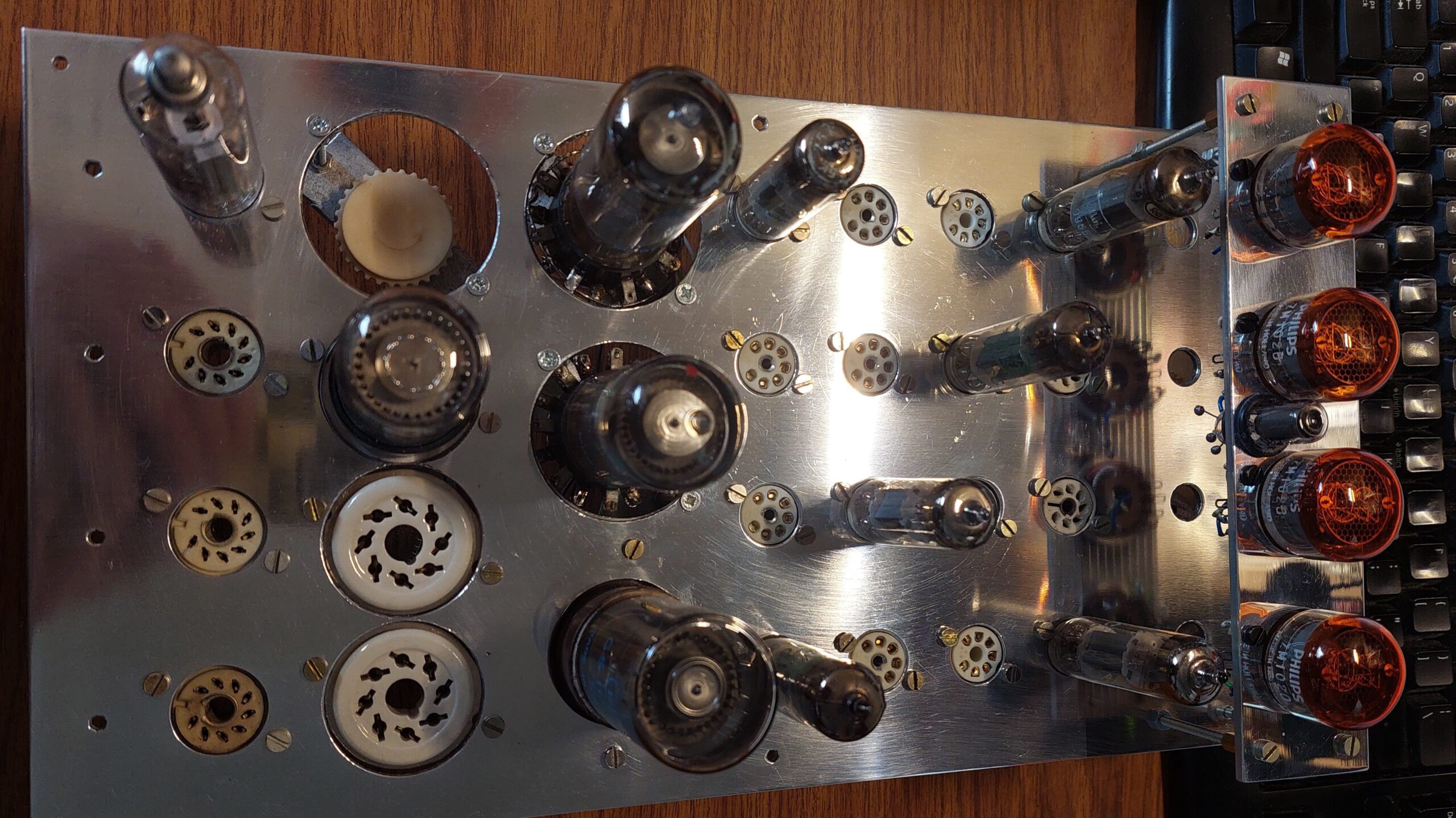Just about every electronic device has some silicon semiconductors inside these days—from transistors to diodes to integrated circuits. [Charles] is trying to build a “No-Silicon digital clock” that used none of these parts. It looks like [Charles] is on the way to success, but one might like to point out an amusing technicality. Let’s dive in to the clock!
Instead of silicon semiconductors, [Charles] is attempting to build a digital clock using valves (aka tubes). More specifically, his design relies on seven dekatrons, which are the basic counting elements of the clock. By supplying the right voltages to the various cathodes of the dekatrons, they can be made to step through ten (or sometimes twelve) stable states, used as simple memory elements which can be used as the basis for a timepiece. [Charles] will set up the first dekatron to divide down mains frequency by 5 or 6 to get down to 10 Hz, depending on whether the supply is 50 Hz or 60 Hz. The next dekatron will step down 10 times to 1 Hz, to measure seconds. The next two will divide by ten and six to count minutes, while a further two will divide the same way to create an impulse per hour. A final dekatron will divide by 12 to count the hours in a day.
Naturally, time will be displayed on Nixies. While silicon semiconductors are verboten, [Charles] is also considering the use of some germanium parts to keep the total tube count down when it comes to supporting hardware. Also, [Charles] may wish to avoid silicon, but here’s the thing about tubes. They use glass housings, and glass is made of silicon.
Cheeky technicalities aside, it’s a great project that promises to create a very interesting clock indeed. Progress is already steaming along and we can’t wait to see the finished product. We’ve seen dekatrons put to good use before, too. If you’re cooking up your own practical projects with mid-century hardware, don’t hesitate to let us know!
